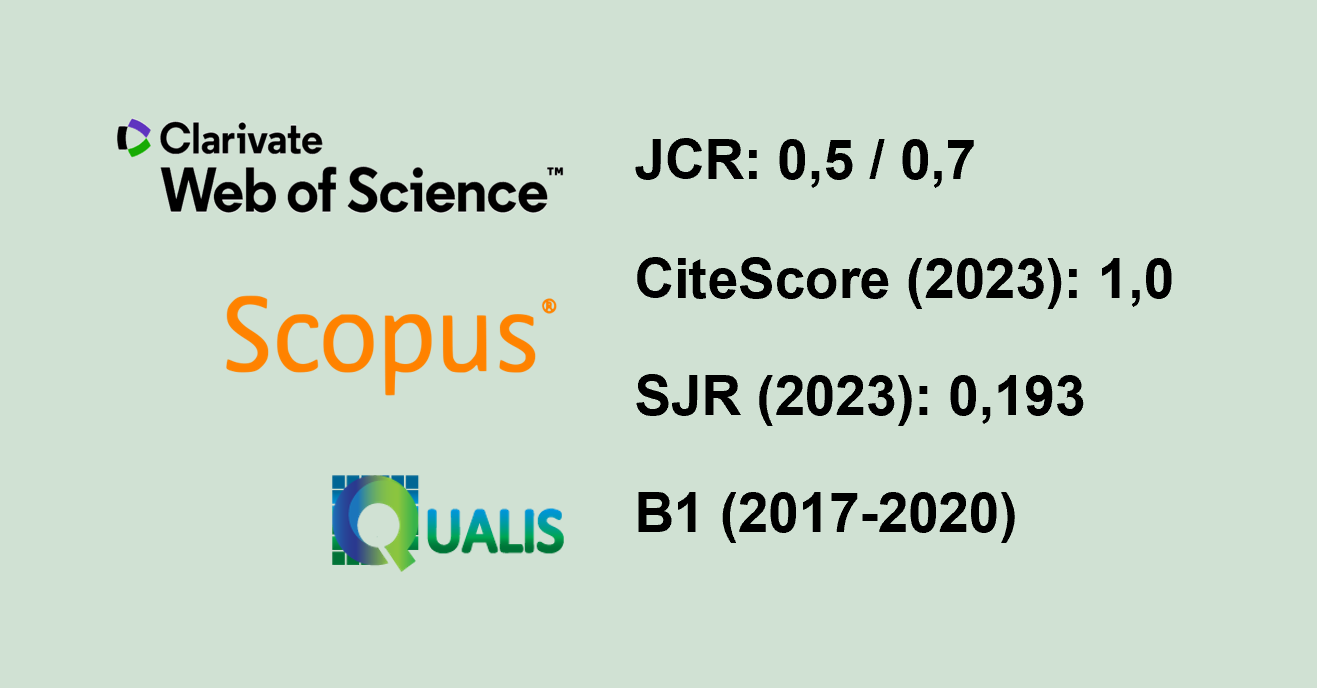Adsorption of 2,4- dichlorophenoxyacetic acid (2,4-d) herbicide on activated carbon of Brazil nut shell
DOI:
https://doi.org/10.53661/1806-9088202549263792Keywords:
Adsorption, Herbicide, PotabilityAbstract
Activated carbon is a material with a high fixed carbon content and large surface area, whose capacity for adsorbing organic compounds depends on the precursor material and the process it undergoes. 2,4-D is a molecule associated with numerous health hazards and is widely used in Brazil for weed control. In rural areas, its use can lead to contamination of surface and groundwater. This study aimed to evaluate the adsorption potential of 2,4-dichlorophenoxyacetic acid (2,4-D) using carbon derived from Brazil nut shell activated at 800 °C, comparing activation atmospheres of water steam and CO₂. Activated carbons, both with water steam and CO₂, were characterized in terms of pore diameter distribution using the Brunauer–Emmett–Teller (BET) theory, morphology by scanning electron microscopy (SEM), and thermal stability by thermogravimetric analysis (TGA). The activated carbons with steam and CO₂ presented high surface areas (397 ± 8 m²/g and 325 ± 7 m²/g, respectively). The micrographs showed high porosity in the activated carbons, and the loss of only 20% of their mass in the thermogravimetric test confirmed the material’s thermal stability. The adsorption kinetics assay was performed by High-Performance Liquid Chromatography (HPLC) over time ranging from 0 to 120 minutes. The equilibrium time was 45 minutes for water steam-activated carbon, achieving 92.51% removal, and 120 minutes for CO₂-activated carbon with 84.81% of 2,4-D removed. The pseudo-second-order kinetic model best fit the data.
Keywords: Adsorption, Herbicide, Potability
Downloads
Published
How to Cite
Issue
Section
License
Copyright (c) 2024 Revista Árvore

This work is licensed under a Creative Commons Attribution 4.0 International License.
All authors agreed to submit the work to Revista Árvore and granted the exclusive license to publish the article. The authors affirm that it is an original work and has not been previously published elsewhere. The scientific content and opinions expressed in the article are the sole responsibility of the authors and reflect their opinions, not necessarily representing the opinions of the editorial board of Revista Árvore or of the Society of Forest Investigations (SIF).








